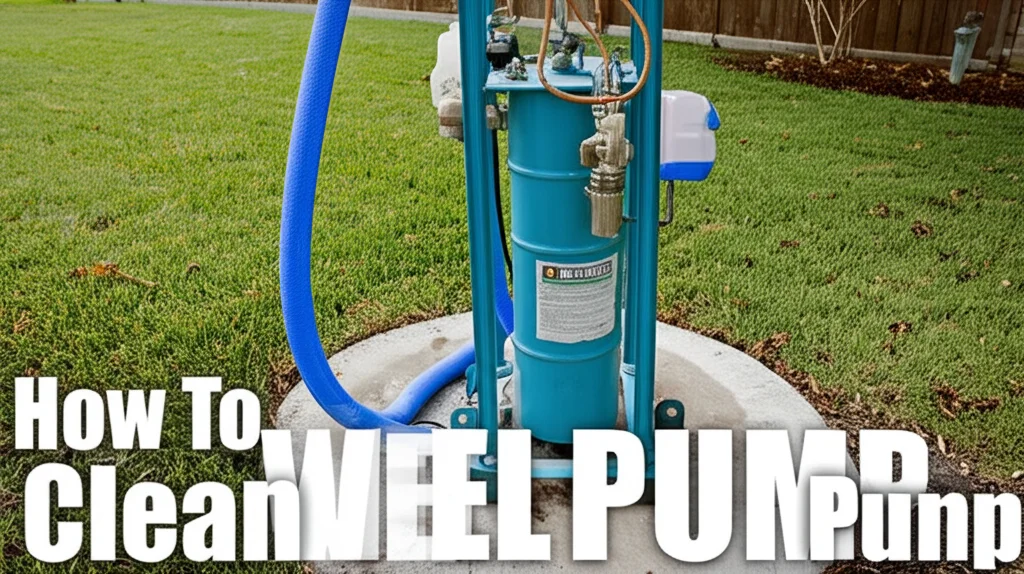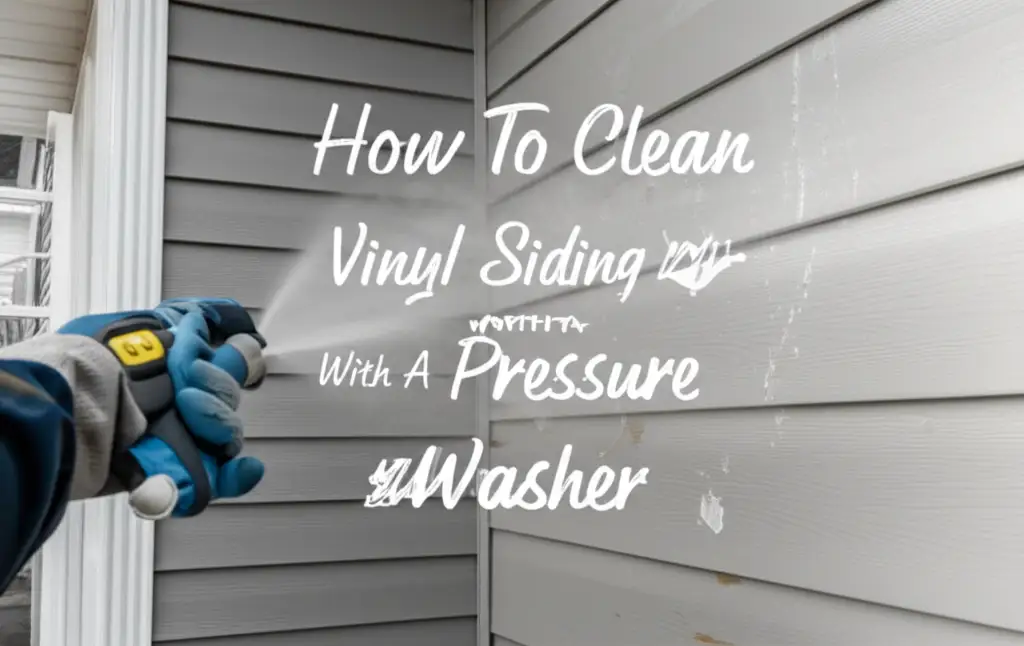· Home Maintenance · 6 min read
How To Clean A Well Pump

Keeping Your Water Flowing: How To Clean A Well Pump
Is your water pressure dropping, or do you notice sediment in your water? A dirty well pump could be the culprit. Cleaning your well pump isn’t a daily task, but regular maintenance is crucial for ensuring a consistent supply of clean water for your home. This article will guide you through the process of how to clean a well pump, covering everything from identifying issues to performing a thorough cleaning. We’ll break down the steps, tools needed, and preventative measures to keep your well pump running smoothly for years to come. Let’s dive in and learn how to keep your water flowing!
Quick Answer: To clean a well pump, turn off the power, relieve pressure, disconnect the pump, inspect for debris, flush the pump and lines, and reinstall. Regular cleaning prevents sediment buildup and ensures optimal performance.
Takeaway:
- Turn off power before starting any work.
- Regularly inspect and flush your well pump.
- Preventative maintenance extends pump lifespan.
Understanding Your Well Pump & Why Cleaning Matters
Your well pump is the heart of your water system, responsible for bringing water from your well to your home. Over time, sediment, minerals, and debris can accumulate inside the pump, reducing its efficiency and potentially causing damage. This buildup can lead to decreased water pressure, noisy operation, and even complete pump failure. Cleaning your well pump removes these obstructions, restoring optimal performance and extending the life of your valuable equipment. Ignoring this maintenance can lead to costly repairs or replacements down the road.
Identifying When Your Well Pump Needs Cleaning
Knowing when to clean your well pump is the first step in preventative maintenance. Several signs indicate it’s time for a cleaning. Pay attention to changes in your water quality or pump performance. Reduced water pressure is a common indicator, as sediment buildup restricts water flow. You might also notice sputtering or cycling on and off frequently. Visible sediment in your water, or a change in water color, are also clear signals. Finally, unusual noises coming from the pump itself, like grinding or rattling, suggest internal buildup needs addressing.
Tools and Materials You’ll Need
Before you begin, gather the necessary tools and materials to ensure a smooth and safe cleaning process. Safety is paramount, so always prioritize protective gear. You’ll need a wrench set to disconnect the pump, a screwdriver for accessing components, and a bucket to catch any water. A garden hose is essential for flushing the pump and lines. Gloves and safety glasses are crucial for protecting your hands and eyes. A wire brush can help remove stubborn debris. Finally, have a pump testing kit on hand to verify proper operation after cleaning.
Step-by-Step Guide to Cleaning Your Well Pump
Now, let’s get to the cleaning process. Remember to prioritize safety by disconnecting the power supply before starting.
- Turn Off the Power: Locate the circuit breaker that controls the well pump and switch it off. This is the most important safety step.
- Relieve Pressure: Open a faucet in your home to relieve any pressure in the water lines. This prevents water from spraying out when you disconnect the pump.
- Disconnect the Pump: Carefully disconnect the electrical connections and the water pipes connected to the pump. Have a bucket ready to catch any remaining water.
- Inspect for Debris: Visually inspect the pump for any visible debris around the inlet screen or other openings. Remove any large particles you find.
- Flush the Pump: Connect a garden hose to the pump’s inlet and flush it with clean water for several minutes. This will dislodge loose sediment.
- Clean the Inlet Screen: Remove and clean the inlet screen thoroughly with a wire brush to remove any remaining debris.
- Reassemble and Test: Reconnect the pump to the water pipes and electrical connections. Turn the power back on and check for leaks. Monitor the water pressure and quality to ensure the pump is functioning correctly.
Preventing Future Buildup: Maintenance Tips
Cleaning your well pump is a reactive measure; preventative maintenance is key to minimizing future issues. Install a sediment filter on your water line to trap particles before they reach the pump. Regularly inspect the well casing for cracks or damage that could allow debris to enter. Schedule annual professional well inspections to identify potential problems early on. Consider a whole-house water filter to further improve water quality and protect your plumbing system. These proactive steps will significantly reduce the frequency of well pump cleanings.
Dealing with Specific Well Pump Issues
Sometimes, cleaning isn’t enough to resolve all well pump problems. If you encounter persistent issues, it’s important to understand the potential causes. A failing pressure switch can cause the pump to cycle on and off rapidly. A clogged check valve can prevent water from flowing back into the well, leading to pressure loss. A damaged impeller can reduce the pump’s ability to move water efficiently. If you suspect any of these issues, it’s best to consult a qualified well pump technician for diagnosis and repair. You can find more information on diagnosing plumbing issues at https://www.beacleaner.com/how-to-clean-bathroom-floor-without-mop/.
FAQ About Well Pump Cleaning
Q: How often should I clean my well pump? A: Generally, cleaning your well pump every 1-3 years is recommended, depending on your water quality and usage. If you notice any of the warning signs mentioned earlier, clean it sooner.
Q: Can I use chemicals to clean my well pump? A: Avoid using harsh chemicals, as they can contaminate your water supply and damage the pump’s components. Clean water and a wire brush are usually sufficient.
Q: What if my well pump is still not working after cleaning? A: If cleaning doesn’t resolve the issue, there may be a more serious problem with the pump or other components of your well system. Contact a qualified well pump technician.
Q: Is it safe to clean my well pump myself? A: Yes, but only if you are comfortable working with electrical and plumbing systems. Always disconnect the power before starting and follow all safety precautions. If you’re unsure, hire a professional.
Q: How do I know if my well water is safe to drink after cleaning the pump? A: After cleaning, it’s a good idea to have your water tested for bacteria and contaminants to ensure it meets safety standards.
Conclusion: Maintaining a Reliable Water Source
Cleaning your well pump is a vital part of maintaining a reliable and safe water supply for your home. By following the steps outlined in this guide, you can effectively remove sediment buildup, restore optimal pump performance, and extend the life of your equipment. Remember to prioritize safety, perform regular preventative maintenance, and consult a professional when needed. Keeping your well pump clean ensures you’ll continue to enjoy clean, consistent water for years to come. Don’t underestimate the importance of this task – a little maintenance can save you a lot of trouble and expense in the long run. If you’re looking for more ways to keep your home clean and well-maintained, check out our guide on https://www.beacleaner.com/how-to-clean-hardwood-floors-with-vinegar/ for tips on keeping your floors sparkling.
- well pump maintenance
- well water quality
- water pump cleaning




